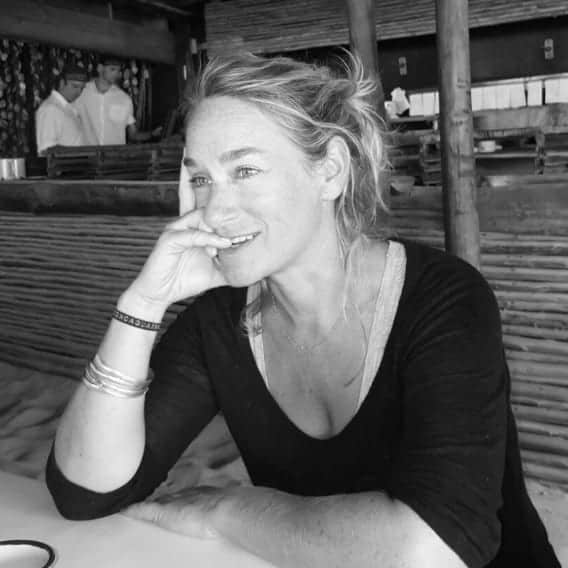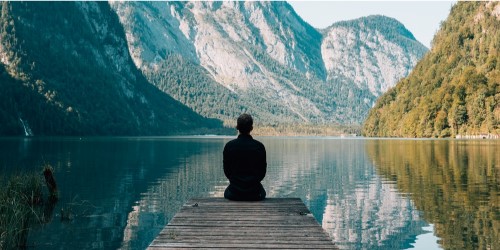
MysticMag features an exclusive interview with Vrajdevi, an international Yoga Teacher, Wellness Therapist, Kirtan Leader, and Author of Spiritual Revolution. With over two decades of experience rooted in ancient wisdom traditions, she integrates the teachings of Bhakti Yoga, sound healing, and holistic wellness to support personal transformation. Through her global retreats, classes, and kirtan albums—including Loving Grace, Beloved, and Love Light—Vrajdevi guides others in reconnecting to the inner source of strength, balance, and spiritual clarity.
How do you incorporate devotion and heart-centered practices into your healing and movement work, and what effect does this have on the transformational journey of those you guide?
For the past twenty years, I have devoted my life to the study and deep immersion in yogic wisdom. Among the many paths of yoga, Bhakti Yoga holds a special place in my heart—it is, in many ways, one of the lesser-known practices, yet it is truly the heart and soul of all yogic disciplines. When we speak of devotion and heart-centered practice, that is precisely what Bhakti embodies.
Whatever form my work takes—whether it’s one-to-one sessions, workshops, classes, or retreats—Bhakti remains the central focus. It is the essence of everything I offer. At its core, it is the wisdom that every breath we take has the potential to be a mystical, transformative moment. The breath, which connects us so intimately to the heart center, becomes a sacred gateway.
This path is not limited to physical practice alone. While the body can be a powerful entry point, yoga truly operates on multiple levels—mind, body, and spirit. When physical movement is infused with conscious breath and a devotional awareness of the Divine, that’s where true transformation unfolds. It becomes less about the individual effort of the small self and more about aligning with the greater Self—the infinite Self—in unity and co-creation with the Divine.
What inspires your blending of different musical and cultural influences in your creative work, and how do these elements support spiritual or emotional awakening?
Sacred sound and music are integral aspects of Bhakti Yoga and form a central part of my personal practice and teachings. Music, for me, is not merely artistic expression—it is a pathway to the divine. I work with a variety of sacred instruments, but the most powerful and accessible of them all is the human voice. Our voice is the first and most essential instrument we each possess, and it holds immense potential to heal, awaken, and connect us to our inner essence.
Through the practice of mantra—these ancient, potent sound formulas—we are able to unlock deep reservoirs within ourselves. Chanting sacred invocations opens the heart and transcends the limitations of the mind, often leading to profound spiritual experiences. Coming from the Māori tradition of New Zealand, I also incorporate elements of our indigenous sacred music, which carries its own deep resonance and wisdom. The fusion of Bhakti and Māori sound traditions creates a powerful and unique offering that touches people in unexpected and transformative ways.
In my gatherings and kirtan sessions, I have witnessed countless individuals moved to tears—many of whom are encountering this practice for the first time. Even without knowing the meaning of the mantras, people often experience deep emotional and spiritual shifts. Sacred sound has the capacity to thin the veils between worlds, sometimes even connecting us with ancestors or loved ones who have passed.
We now understand, across many disciplines, that everything is vibration—including ourselves. As living instruments, it is essential that we attune to frequencies that uplift and awaken. When we consciously tune ourselves to divine vibrations through voice, mantra, and sacred music, we align with a frequency of healing, empowerment, and spiritual illumination that is available to all beings.
Can you share a powerful life lesson or teaching that has significantly shaped your path, and how it continues to inform the way you teach and live today?
As I was mentioning earlier, my book Spiritual Revolution: Unconventional Life Lessons from My Teachers is a deeply personal offering, dedicated to the many transformative lessons I’ve encountered throughout my life. Among them, one stands out as the most profound: the loss of my sister when I was just 22 years old.
She was not only my sister but one of my closest friends. Her passing marked the greatest loss I have ever experienced—and to this day, it remains a defining moment in my life. That period was intensely emotional, unimaginably painful. It brought me to my knees. But, as many spiritual teachers throughout time have shown us, it is often through the most devastating circumstances that the most profound awakenings occur.
During that time, I experienced a series of mystical, otherworldly events—some of which I detail in the book—that opened my perception to the reality of spirit. While I had already been on a spiritual path and had been teaching yoga for a few years by then, this loss became a pivotal turning point. It clarified my purpose. It deepened my devotion. It taught me the preciousness of life in a way nothing else could.
We often live as though we have all the time in the world, but death is the one certainty of our human experience. It doesn’t discriminate by age, by circumstance, or by timing. Recognizing this truth early in life awakened something powerful in me: a fierce dedication to supporting others—especially women—on the path of holistic wellness, encompassing mind, body, and spirit.
One of the most important revelations that arose through this experience is the unwavering knowing that while the body may die, the spirit lives on. I have no doubt in my heart that this is true. And that knowing has become a source of great comfort and strength—not only for myself, but for those I support who are grieving, feeling lost, or unsure how to move forward after loss.
There is beauty in realizing that our loved ones are never truly gone. Their presence continues in subtle, profound ways—ways that transcend logic or physical sight. It’s not just about the individual soul of someone we’ve lost, but about the greater web of lineage, ancestry, and spirit that we are all part of. There is a deep interconnectedness that flows through us—through time, through space, through energy.
I was speaking with a friend recently about how Wi-Fi works—how incredible it is that I can be here in Spain and she in South Africa, and yet we can see and speak to each other as if we’re in the same room. No one questions whether Wi-Fi exists, even though we can’t see it. We trust it because we’ve experienced its effects. And yet, when it comes to spirit—something just as real, just as powerful, and often even more transformative—we hesitate to believe, simply because we can’t touch it or prove it by conventional means.
Perhaps it’s time to reframe that thinking. Perhaps the invisible is not the unreal. Just because we can’t measure the divine doesn’t mean it isn’t deeply present. Ancient texts, sacred songs, and the wisdom of sages throughout time have spoken of this reality. My life and my experiences have only confirmed what they already knew: that there is a sacred, living energy moving through all things—and that we are never truly alone.
When designing immersive experiences or retreats, what elements do you consider essential for facilitating deep inner transformation and lasting integration?
One of the most powerful aspects of my work is facilitating retreats. I run a few each year, and without fail, they are the most rewarding experiences—not just for the participants, but for me as a teacher as well.
What makes these retreats so special is that they’re not simply holidays. They are sacred spaces of intentional transformation. Unlike a yoga vacation where you might do a bit of movement in between sunbathing and sightseeing, these retreats are immersive journeys designed for inner work—mind, body, and spirit.
The real magic happens when you step outside your regular routine. That simple act—of choosing to pause your day-to-day responsibilities and distractions—creates the space for deep transformation. You begin to see yourself more clearly, feel more deeply, and connect more honestly. And that’s when the shifts begin to take root.
Each retreat is thoughtfully curated based on who is attending and what the collective energy calls for. Before participants arrive, we often send out a questionnaire so we can get a sense of where they’re at and what they’re yearning for. Then we tailor our practices accordingly.
Some retreats have centered around the elements—earth, water, fire, air, and ether—especially when working with groups longing to reconnect with nature. For example, one retreat brought together a group of successful professional women from London who were craving a return to the wild, to the rhythm of the natural world. The elements offered a perfect lens through which to explore this reconnection.
Other retreats have been focused on the chakra system, using the energy centers of the body to dive into emotional healing, mental clarity, and spiritual insight. This structure allows for both collective themes and deeply personal journeys, as participants journal, reflect, and connect with the energies that resonate most.
What all of these retreats share is an understanding that the real revolution is internal. Spiritual Revolution—the title of my book—isn’t just a catchy phrase. It’s a call to action. A reminder that the most important work we can ever do is the work within ourselves. And these retreats are a container for that revolution to begin, deepen, or unfold in new ways.
One thing I’ve come to learn through years of facilitating is how important integration is. It’s one thing to feel inspired, open, and alive during a retreat, surrounded by like-minded souls and beautiful settings. But it’s quite another to return home and maintain that energy in the face of daily routines and responsibilities.
That’s why we always build in post-retreat integration support. Whether through weekly Zoom check-ins, ongoing group sessions, or simply being available to participants, we make sure the connection doesn’t end when the retreat does. Community, accountability, and continued encouragement are all part of the transformation. You’re not just returning home—you’re returning with new tools, deeper clarity, and a community that’s walking alongside you.
These retreats are not just events. They are portals. They are sacred pauses. They are revolutionary spaces for awakening.
How do you draw from various cultural and spiritual lineages in your work, and what have these traditions taught you about the nature of healing and awakening?
Over the course of my life, I’ve been blessed with teachers from a wide range of cultural and spiritual lineages—from the ancient wisdom traditions of India and the sacred teachings of Māori elders in New Zealand, to profound guidance from masters in China and Tibet. Though these paths are unique in their symbols, stories, and ceremonies, there is a beautiful thread that runs through them all.
And that thread leads us inward.
Again and again, the core message of these diverse lineages brings us back to the same sacred truth: that all transformation, healing, and awakening begins within. It is not something to be chased in the outer world, though the external can reflect and support our inner journey. But ultimately, the source of true peace and wisdom lies in the depths of our own hearts.
Whether through meditation, yoga, sacred music, prayer, breathwork, or ritual—each tradition points toward the same doorway: presence, gratitude, and the courage to sit with ourselves.
The breath is the bridge. Always.
It links the body to the mind, and the mind to the spirit. It reminds us that we are alive right here, right now. In a world that constantly pulls our attention outward, the breath invites us home.
So no matter which lineage you resonate with or what path you walk, the invitation is the same: Go in. Be still. Listen. Trust that the universe is not out there somewhere—it’s pulsing within your own being.
How do you navigate sharing sacred and traditional practices in a way that honors their origins and maintains cultural integrity in a global wellness space?
I find it fascinating that today, everything is so readily accessible. We live in a time where sacred teachings and ancient practices are available at our fingertips. But with that accessibility comes a wave of distortion—twists of the traditional and sacred that, at times, stray far from their roots. I won’t go into all the details here, but I will say this: when there is true honour and respect for ancient wisdoms, it transcends cultural identity. It doesn’t matter whether you’re Indian, Chinese, Māori, or from any other lineage—what matters is the reverence with which you approach these teachings.
At the heart of it, we are all brothers and sisters walking this path together. And if you’re genuinely studying and sharing these teachings, you know within yourself whether you’re doing so with humility or with ego. That awareness is essential. You know when you’re moving from the divine within you—and when you’re not.
This entire journey, this global wellness movement, is a kind of dance. And like any dance, it can be messy or beautiful, awkward or graceful. But when guided by truth, love, and respect, it becomes sacred.
In time, the truth always reveals itself. Those who hold these ancient teachings with integrity can be felt. Their authenticity resonates. And if we are fortunate, we cross paths with these rare and beautiful leaders—those who hold sacred space with humility and deep reverence. They do exist. And when we find them, it is a blessing beyond words.
If you would like to find out more about Vrajdevi, please visit https://www.vrajdevi.com/



